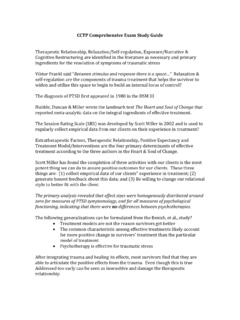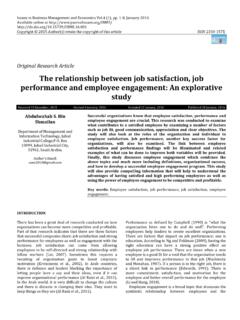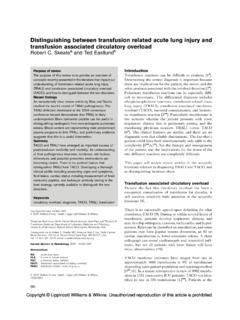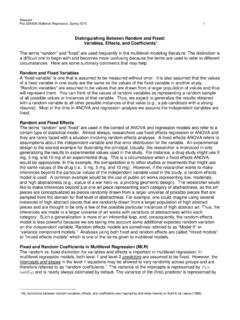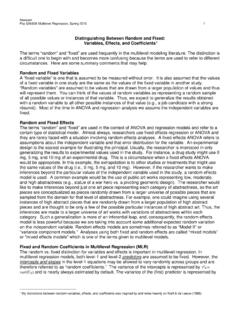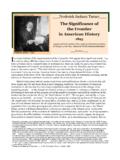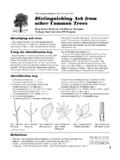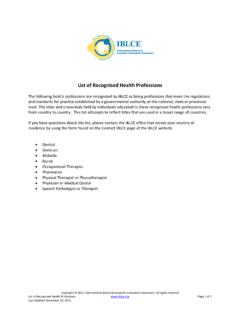Transcription of Appendix 9-1: Sample Questions for Probable Cause and ...
1 Ch. 9: Probable Cause and Transfer Hearings (Oct. 2017) North Carolina Juvenile Defender Manual Appendix 9-1: Sample Questions for Probable Cause and Preliminary Hearings _____ Appendix 9-1: Sample Questions for Probable Cause and Preliminary Hearings The following is reprinted with permission from CRIMINAL PRACTICE INSTITUTE: PRACTICE MANUAL, Chapter 2 Appendix C (Public Defender Service for the District of Columbia, 2011 Edition). The Sample Questions were created for Probable Cause hearings in criminal cases, but they may be useful for such hearings in juvenile cases. The following Questions are very basic and include only some aspects of certain offenses. The Questions are not designed to replace the specific, detailed questioning of witnesses necessary to elicit the unique facts in a particular case.
2 I. Identification A. Questions about the Event Itself 1. Get a detailed narrative of what happened, including where the witness was coming from, what the witness was doing prior to the incident, and where the witness was going. 2. Who was the witness with? 3. What was the witness paying attention to just before the witness noticed the perpetrator for the first time? 4. From which direction did the perpetrator approach (front, rear, side, don t know)? 5. What was the exact location of the confrontation? (Get this in words and try to have the witness draw a diagram of the scene.) 6. Exactly what happened? Was there more than one person involved? (Get the exact and relative roles of the persons involved.) 7. If there was more than one perpetrator, find out which one is supposed to be the defendant.
3 (Where was the defendant at all times, in absolute terms and in relation to the other perpetrators and witnesses?) 8. Which perpetrator made contact with the witness? 9. When did the witness first notice the perpetrator(s)? How far away were they? What drew the witness s attention to the perpetrator(s)? 10. Was anything taken from the witness? What was done with it after it was taken? 11. In which direction or to where did the perpetrator(s) flee? For how long after the incident did the witness keep the perpetrator(s) in sight? B. Opportunity to Observe Witness s state of mind 1. What had the witness been doing prior to the incident? Ch. 9: Probable Cause and Transfer Hearings (Oct. 2017) North Carolina Juvenile Defender Manual 2. Had the witness been drinking or using any drugs?
4 3. Where was the witness going at the time of the incident? 4. How much sleep had the witness had the night before? 5. Was the witness tired? Preoccupied? 6. Was the witness frightened? 7. Was the witness focusing on a weapon during the incident, or on another individual? Physical conditions of observation 1. What was the distance between the witness and the perpetrator when the witness first noticed the perpetrator? 2. What was the distance between the two of them during the majority of the incident? 3. What was the duration of the incident? (If it was a long time, split it up into parts. The witness may not have had a good opportunity to view during some of the segments or may have been focusing on one particular item or person.) 4. What was the angle of observation between the witness and the perpetrator?
5 5. What is the witness s hearing like? Vision? 6. How long did the incident take? (Note: Time is very important. Most witnesses will say that an event took minutes when it actually took seconds. Demonstrate how long a minute is the time may be cut considerably.) 7. What were the weather conditions like? (Sunny, rainy, overcast, stars out, etc.) 8. What were the lighting conditions? Were there streetlights, house lights, car lights, Was any of the lighting filtered or obstructed? Get exact locations of all lights. Were the streetlights high or low intensity? Were there any lights available that were not turned on? 9. Were there any physical barriers or obstructions between the witness and the perpetrator, , cars, trees, or other witnesses? C. Reporting the Incident Police 1.
6 How was the incident reported to the police? (Call made? Flagging down a car?) 2. Who reported the incident? 3. How soon after the event was it reported? 4. With whom was the incident discussed? 5. Exactly what did the witness say in giving the report? 6. Did the person to whom the report was made make any statements or say anything? 7. Were there other witnesses who talked to the police? 8. Were there other witnesses who did not talk to the police? 9. Did the police read back to the witness what had been written down? Did the witness change anything or adopt it? 10. Did the witness forget to tell the police anything that the witness is now telling you? 11. What was the initial description the witness gave to the police? 12. Did the witness make a written statement?
7 Ch. 9: Probable Cause and Transfer Hearings (Oct. 2017) North Carolina Juvenile Defender Manual 13. Was the witness under the influence of any drugs or alcohol when speaking with the police? 14. Has the witness spoken with anyone else about the incident? Prosecutor 1. Has the witness been to the grand jury? Did the witness testify or only meet with a prosecutor? What Questions were asked by the prosecutor and the grand jurors? 2. What was the witness s testimony? 3. Did the prosecutor take notes of the meeting? 4. Who else has met with the prosecutor? 5. Is there anything the witness told the grand jury or the prosecutor that the witness has not told you? 6. Is there anything the witness told you that the witness did not tell the grand jury or the prosecutor?
8 D. Description of the Perpetrator 1. Age 2. Height (relative to witness or another object) 3. Weight 4. Skin color and complexion 5. Nose (shape) 6. Mouth (shape, especially lips) 7. Teeth color, missing, crooked, straight, crowded, gaps, unusual shape, noticeable crowns 8. Eyes (color, shape, and positioning) 9. Shape of face (broad, narrow, type of forehead, etc.) 10. Glasses? 11. Facial hair (type, style, color, amount) 12. Hair (style, amount, color) 13. Clothing description (style, color, distinguishing features) a. Coat b. Hat c. Pants d. Shirt e. Shoes f. Any other articles? 14. Any distinguishing or unusual features? 15. Was the perpetrator carrying any object? (Get full descriptions of any weapons: style, type, color, size, where the item came from.)
9 16. Was there anything distinctive about the perpetrator s voice, the way the perpetrator walked, or any unusual mannerisms? 17. Does the description that the witness gave to you differ in any way from that which the witness gave to the police? Did the witness add anything or leave anything out? Ch. 9: Probable Cause and Transfer Hearings (Oct. 2017) North Carolina Juvenile Defender Manual E. Evaluation of the Witness Background 1. Has the witness ever been a victim of a crime before? 2. Has the witness ever been a witness to a crime before? 3. How articulate is the witness? 4. How certain or sure does the witness appear to be? 5. How anxious is the witness to pursue this case? F. Making an Identification 1. How was the identification made show-up, photo array, line-up, caught on the scene, second sighting?
10 2. What did the police say to the witness before the identification? Did the witness overhear anything being said? 3. What did the police say during the identification? 4. What did the witness say in making the identification? (Exact words.) 5. What did the police say after the identification? 6. Did the police write down what the witness said? 7. Were there any other witnesses around during the identification? How close were they to this witness? 8. Were there other identifications made? 9. What did any other witness say about an identification? 10. Was the witness asked to identify anyone but was unable to do so? (Get full details.) 11. On what did the witness base the identification clothes, face, relative size, body build? 12. How soon after the incident was the identification made?



